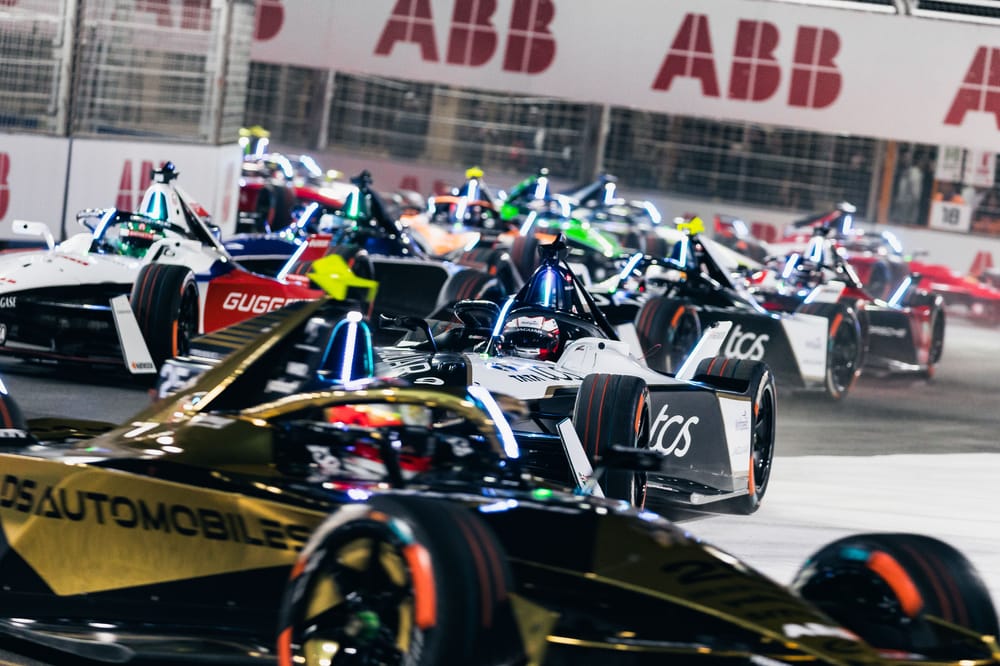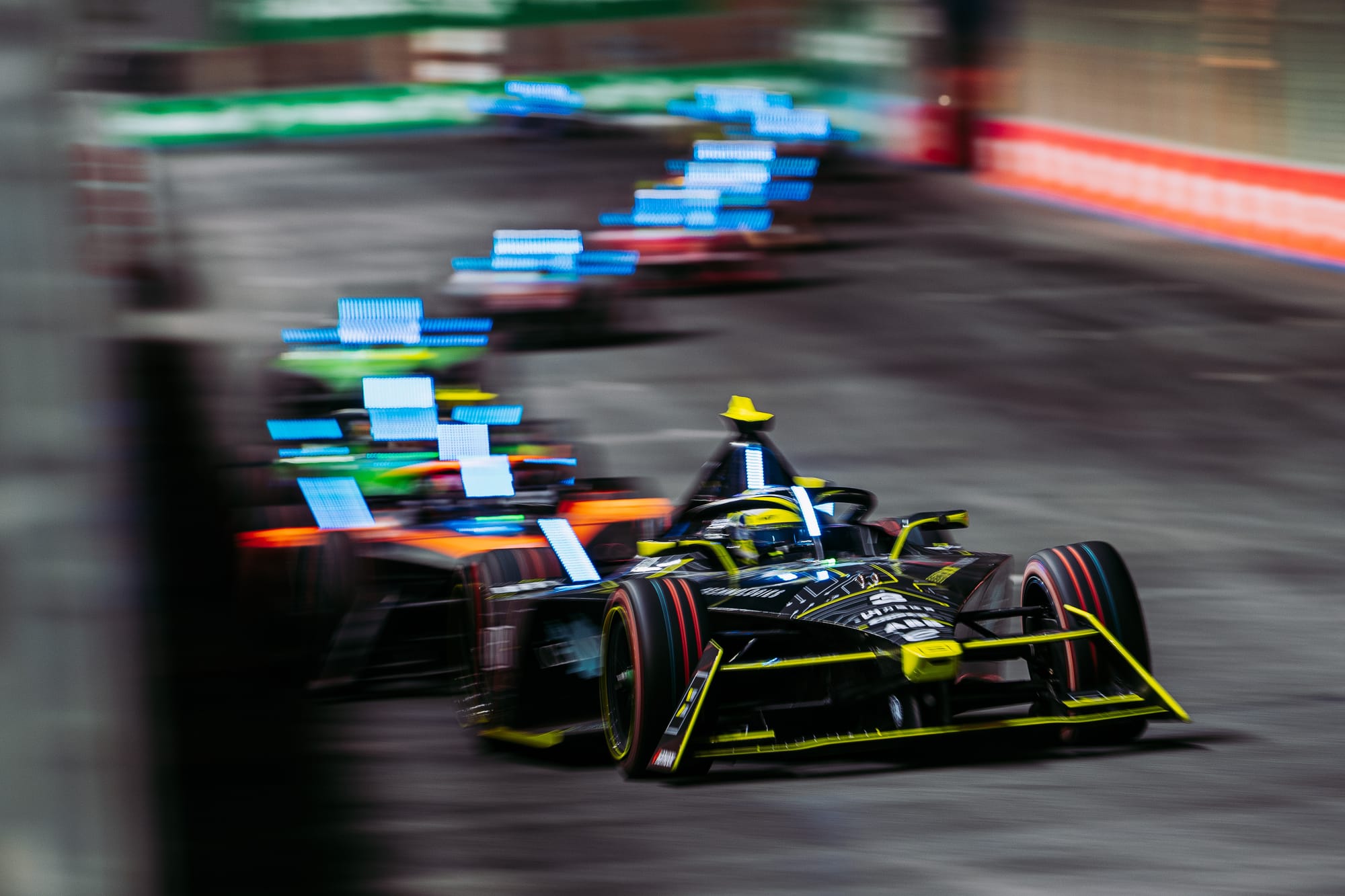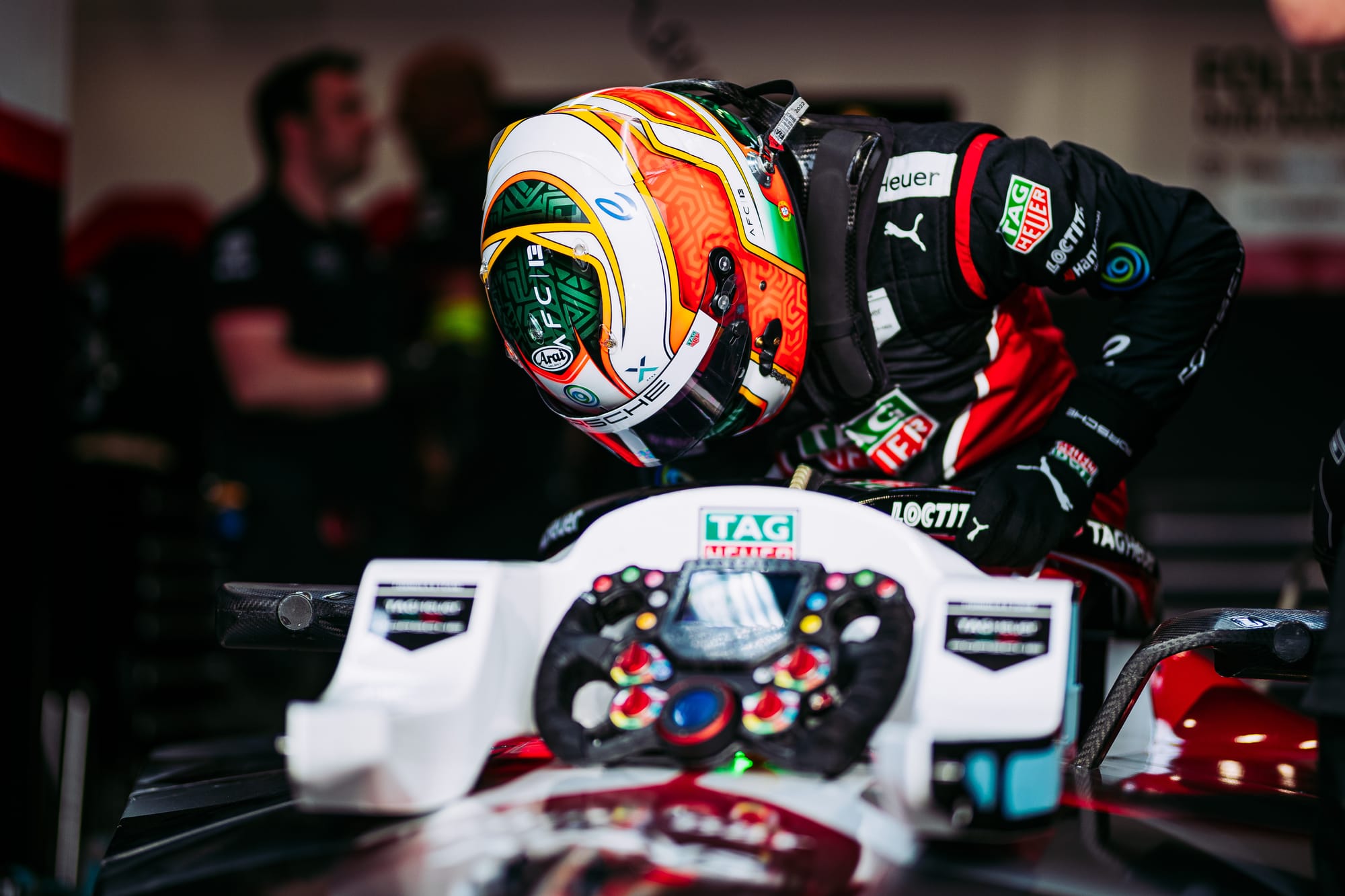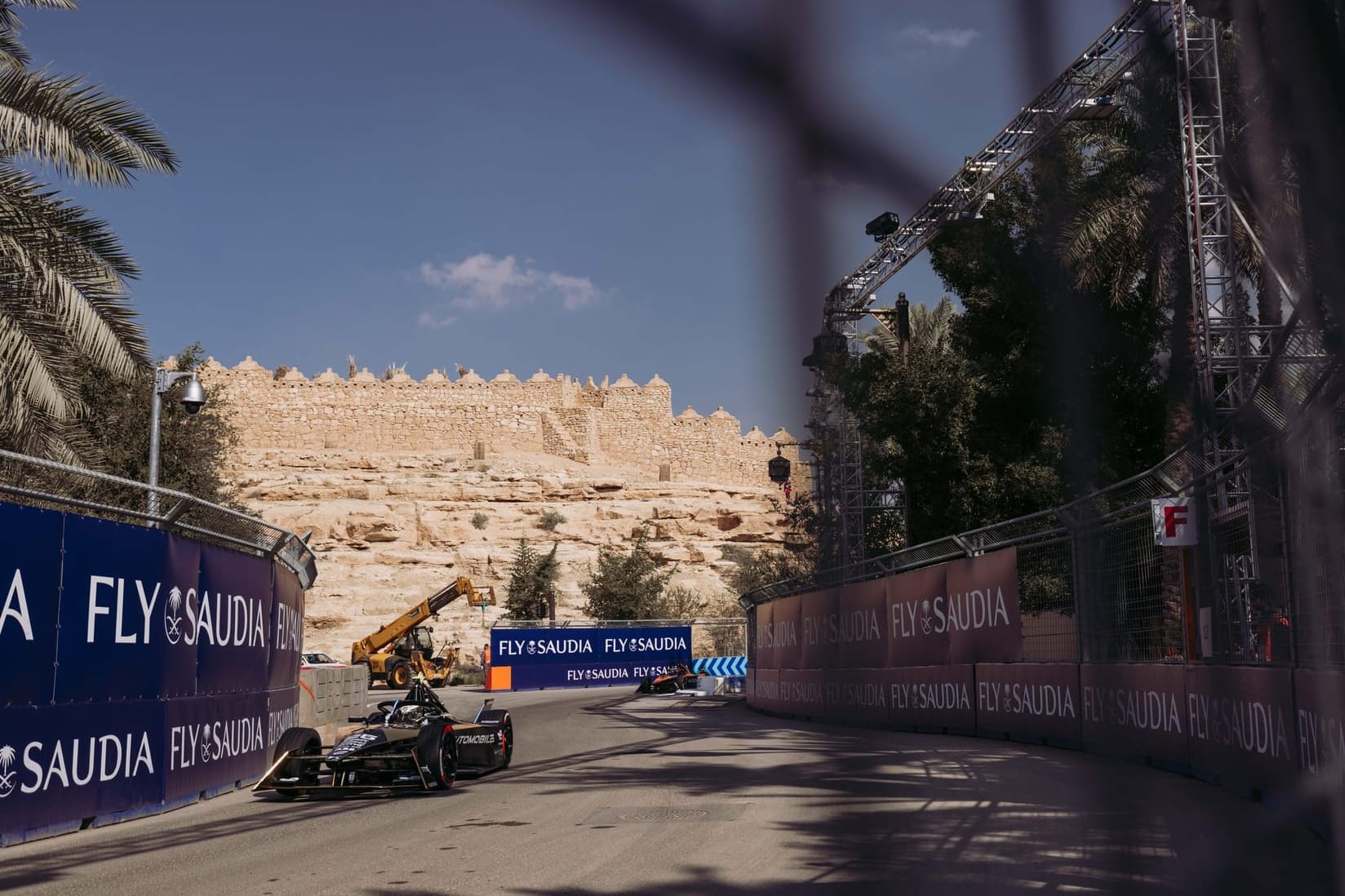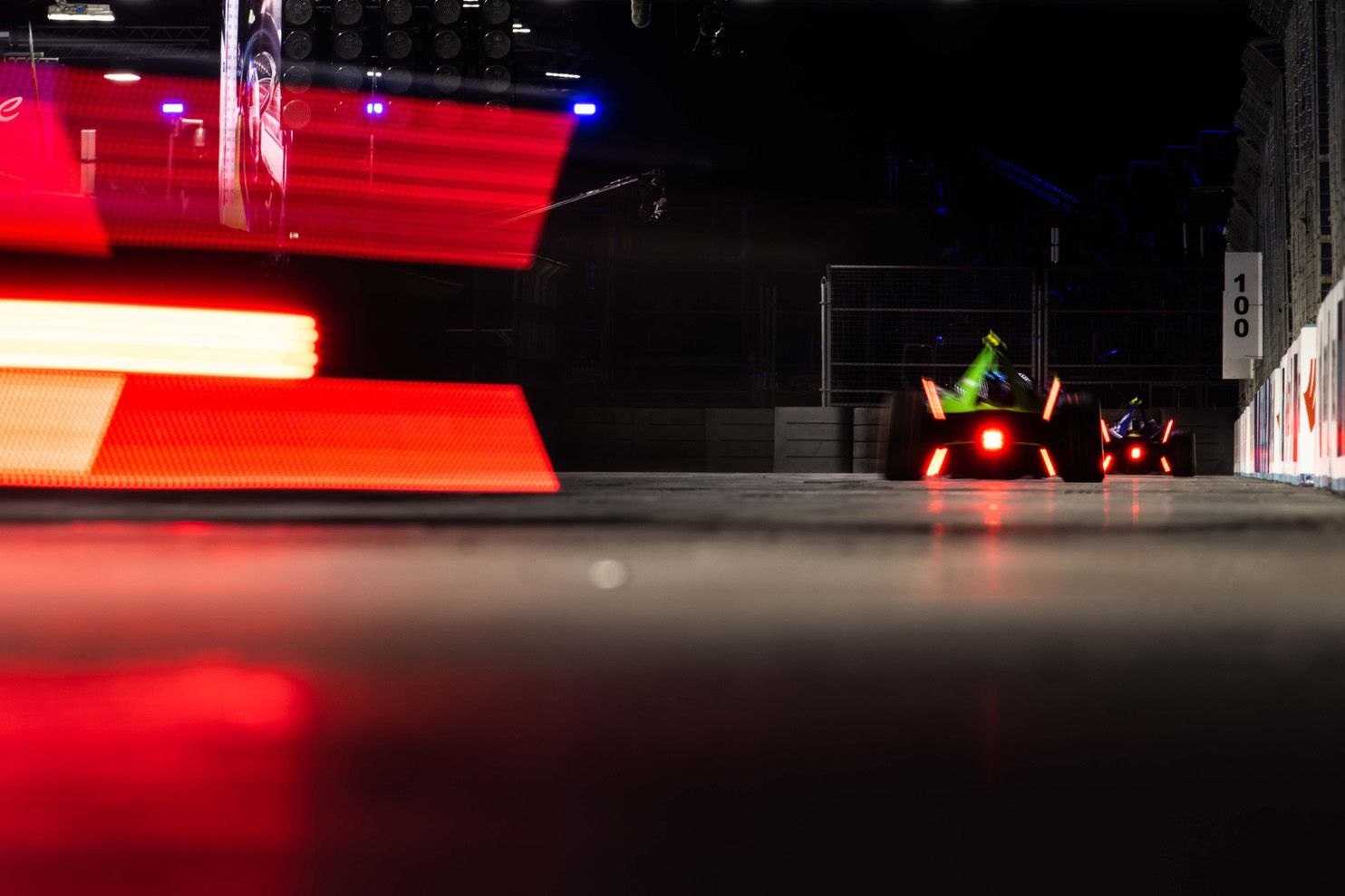January and February has long been a relative wasteland for motorsport (the on-track stuff, anyway). A time to recharge and rebuild with only the Dakar Rally and the odd endurance race in the middle east available to appease racing consumers' appetites.
Formula E has always had races at this time of the year, and in 2024 its opening three, run over the duration of a fortnight, were rightly viewed as vital events.
Adding to the imperative of these races was the fact that a void was created with the unedifying cancellation of the Hyderabad E-Prix just six weeks from its planned February date. This was a big blow for the championship and the legal ramifications, of which there are likely to be many, will rumble on for months to come.
The seven-week chasm until Sao Paulo in mid-March - by which time other championships are starting or will have already begun - now leaves the question of whether Formula E launched off a spectacular vault at an opportune time or perhaps fell a bit flat on what should have been its days in the sun.
The truth is probably somewhere in-between. And the promising aspects now are that present CEO Jeff Dodds’ early-in-his-tenure proclamation to make more ‘noise’ is showing signs of finally locating the 'volume up' button.
Viewing figures up (way up)
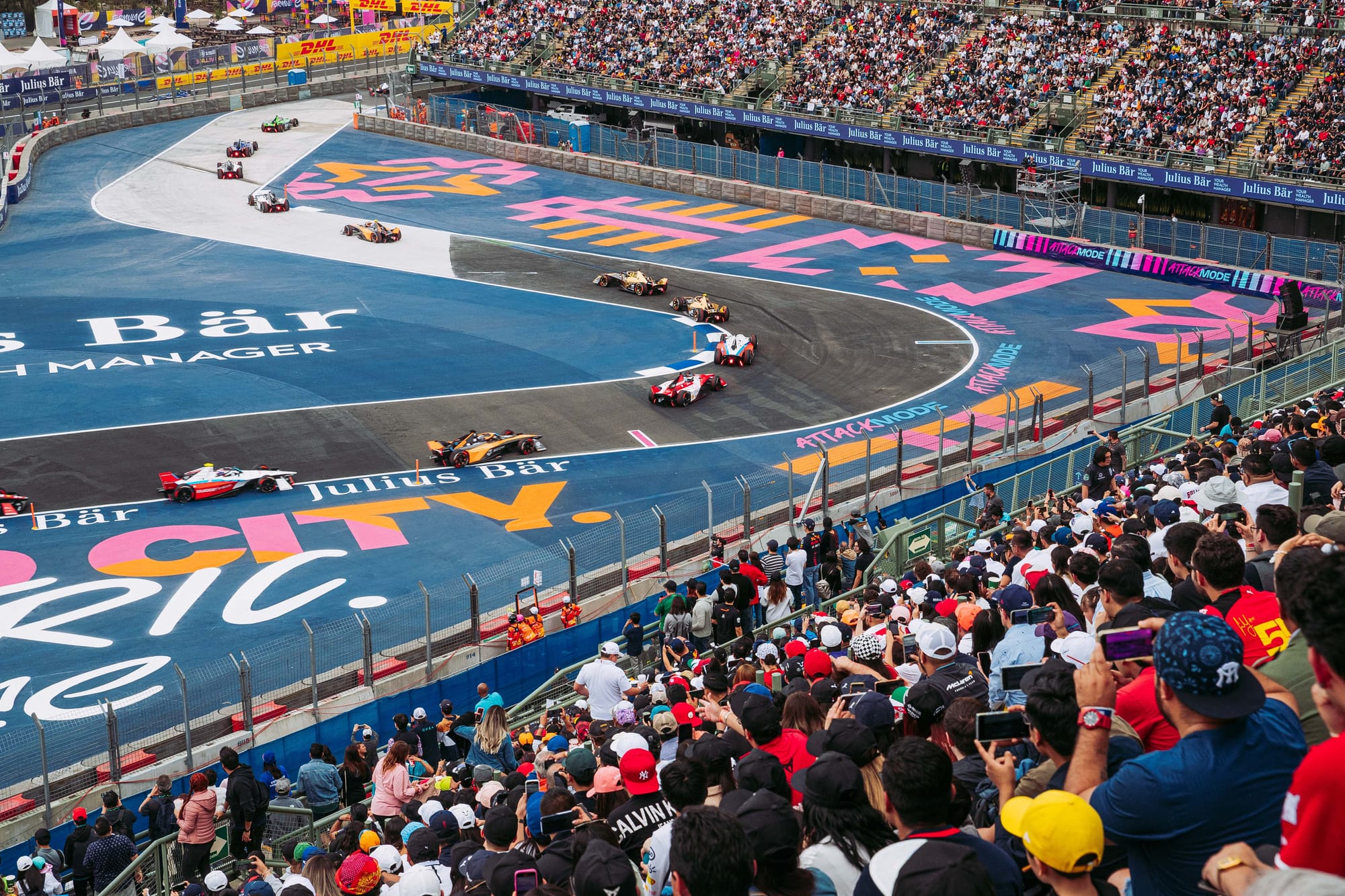
A day before the Diriyah E-Prix began last month, Formula E disclosed what it described as ‘record-breaking TV audiences’ for the Mexico City opener in mid-January.
The figures were astounding and actually needed re-reading. According to Formula E, ‘an all-time high for the US market of 3.4m viewers watched the as-live full race broadcast by long-standing partner CBS on its main network channel, beating the previous high on the same channel for the New York City E-Prix in 2021’.
That means that over two million more people in the US watched the Mexico City E-Prix than last November’s Las Vegas Formula 1 Grand Prix, which peaked at 1.31 million on ESPN*.
The Formula E figures claim to even surpass the high-water mark of F1 in the US, which came at the inaugural Miami F1 race in 2022, at 2.58 million*.
These US figures for Mexico City were so extraordinary that they were initially discredited among some in the paddock. One well-known figure even described them as “crude make-believe” to The Race in Diriyah.
You could see their point. These were unprecedented figures. But for clarity, they were delivered with the caveat of people tuning-in for a minimum of one minute. This is known to be general and accepted collation protocol for TV figures the world-over.
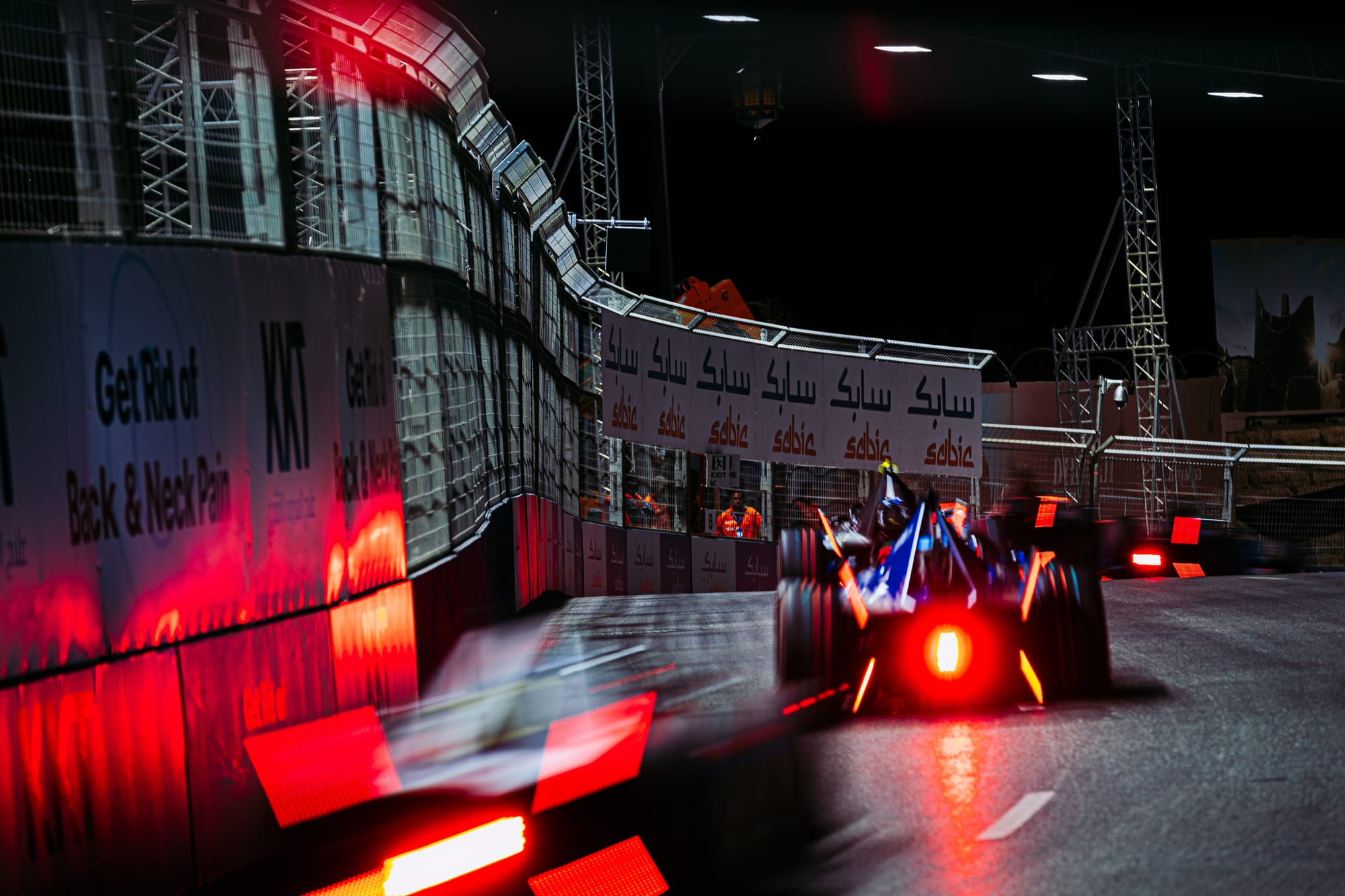
The gathering of such figures can often be something of a black art in itself, so surely here there was some creativity at play?
Perhaps the figures included eyeballs on trailers and previews, which were pitched during the NFL’s so-called ‘wildcard weekend’ when CBS screened several matches live, including the hotly anticipated Cleveland Browns vs Houston Texans game.
Apparently not. The Race contacted Formula E regarding the figures and a series spokesperson said they were “just for the relevant main FE programming and not for an FE promo in any other programme or segment”.
Irrespective of the collation of the figures, and we have to take Formula E at its word on what was presented and released via PR, Formula E showcasing itself amid NFL matches, and in the UK on the back of Premier League games on TNT Sports, was much more inspired than the generally lamentable trailering on terrestrial channels over the last few years.
Formula E’s new streaming partner Roku featured the Mexico City race prominently on its Home Screen and Sports Zone, and according to Formula E 'created a dedicated zone to immerse audiences in all things Formula E’.
Roku showed several programmes including the live race, highlights and the Formula E Unplugged series to which this correspondent contributes as a pundit. A post-race programme called Recharge also streamed exclusively on The Roku Channel.
Season 10 is going to be BIG 👀
— Formula E (@FIAFormulaE) January 10, 2024
IT’S ON! ⚡@Hankook_Sport #MexicoCityEPrix pic.twitter.com/Agj43ybgQ5
Added to that, Formula E also lauded its own social media engagement with impressions stated to have jumped ‘205% year on year’, while the website which features ‘rich content introducing new fans to the sport with explainers and driver profiles’ also had its busiest day since launch.
A single Instagram reel became Formula E’s most-viewed social content ever with more than 25 million views. That featured Porsche’s Antonio Felix da Costa, promoting the aforementioned new Unplugged docuseries.
Then there was the frankly terrifying sight of a giant Jake Dennis towering over Mexico City's Foro Sol stadium in a CGI-generated skit. Whatever you accuse Formula E of doing or not doing, it certainly didn’t do things by halves in January.
Strong scheduling strategy
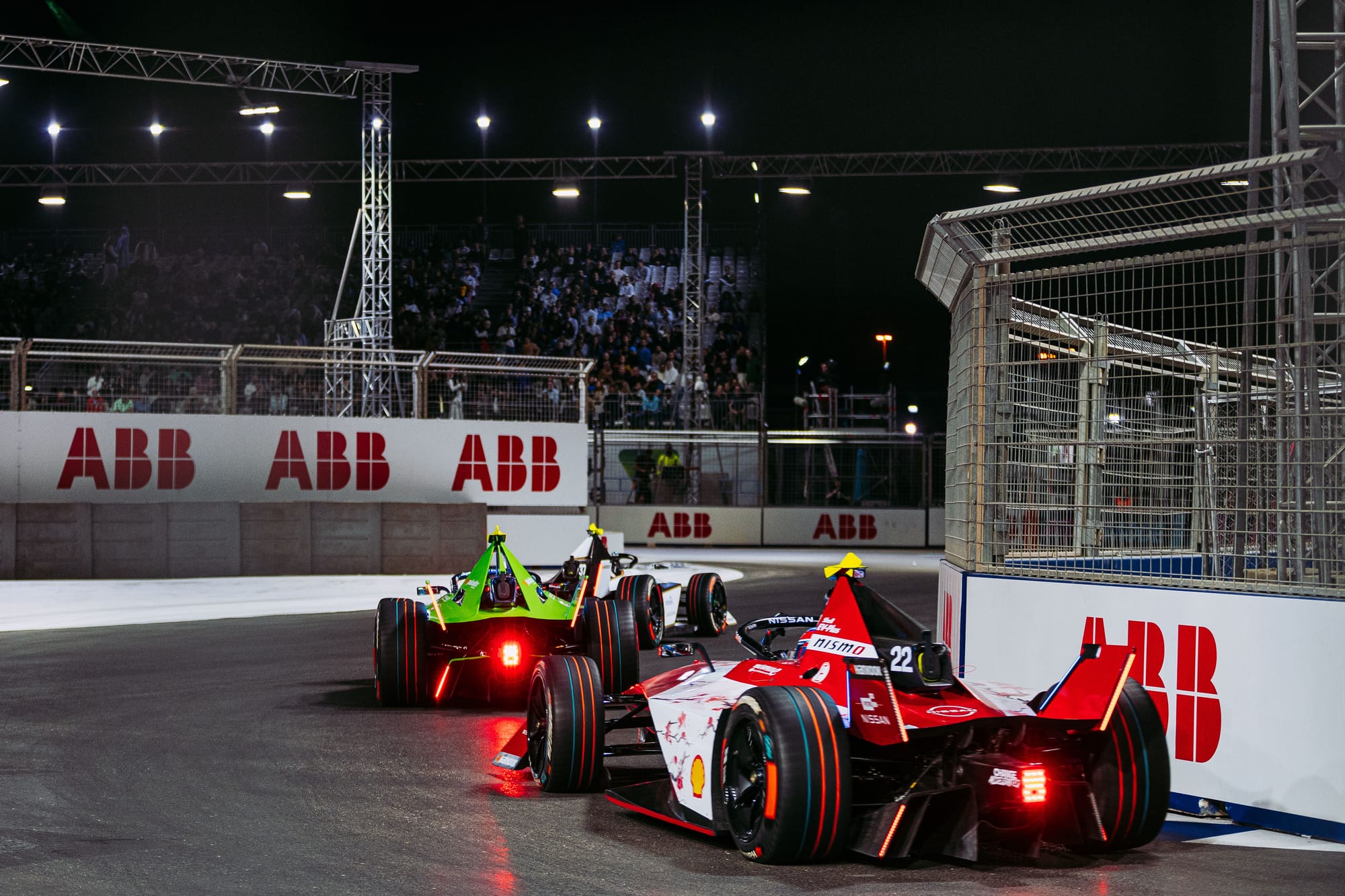
The deal for Whisper TV and TNT to be embraced by Formula E is clearly hoped to have a rub-off via strong scheduling and inherited audiences from programming that rides shotgun to the races.
When these include Premier League football matches the possibility for consumers to ‘give FE a go’ for curiosity’s sake is clearly enormous and full of potential.
In the UK, via TNT Sports (formerly BT Sport), TV audiences are said by Formula E to have been a ‘29% increase on the Mexico City race last season’ as viewers tuned in to the first race broadcast, with coverage fronted by new Formula E presenter and ex-Tottenham, Newcastle and England footballer Jermaine Jenas.
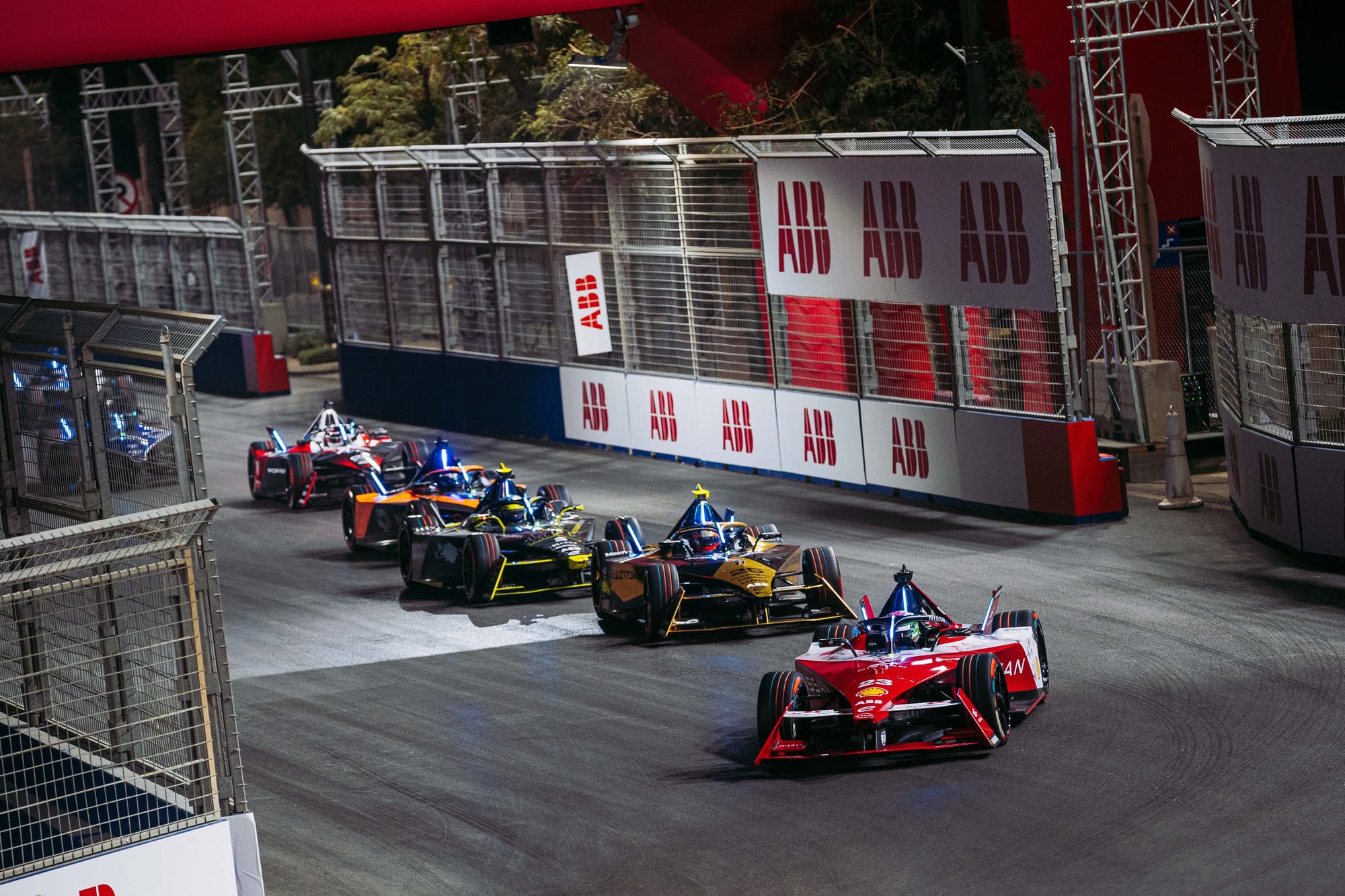
The Race understands that a figure of 260,000 viewers in total for Mexico City was given to teams ahead of the Diriyah E-Prix. It’s not clear why this was not publicly released in its press material, but again that is a figure way beyond expectations ahead of the season starting.
TNT Sports 1 coverage is believed to have averaged 41,000, peaking with 100,000 viewers at the start soon after the Newcastle United versus Manchester City five-goal thriller ended.
With Jenas opening and closing the show, it’s interesting to wonder how many of those fans became curious of a well-known footballing face immersed in a strand of motorsport that most will not have known. The figures suggest there were quite a number, which for Formula E is very encouraging.
Broader production output

Formula E has made many changes to its team since the change brought about by Liberty Global last year when Jamie Reigle was replaced by Dodds.
The addition of the Whisper TV team has meant a bolstering of the production sheen, including an interesting addition of David Coulthard engaging the top three drivers in conversation as they were being ferried to the Mexico City podium, with Sebastien Buemi amusingly taking mock distaste in being labelled a veteran now.
“You don’t need to worry until you’ve got hair my colour.” 👴🏻@therealdcf1 took our top 3 finishers to the podium… and gave them some (s)age advice! 😂 pic.twitter.com/Er6EvYCE3I
— Formula E (@FIAFormulaE) January 18, 2024
Jenas himself looked more comfortable in Diriyah than he did in Mexico City, but plainly needs more races to bed in properly. In fact, he needs the help of the whole paddock, as very few sports presenters oscillate between two different sports at all these days, let alone one as complex as Formula E that takes place in a single day, so it is unfair to be critical of errors and uncertainties right now.
The event anticipation and race reaction pieces by hosts Saunders CB and up and coming presenting talent Alexa Rendell also have the feel of being much more freshly cohesive this season.
So too the in-session chats to team principals give a bit more of an insight into the cut-throat jousting of the duels in qualifying. Understanding the clinical closeness of qualifying - while it’s not going to set any viewing figure records alight - is a crucial element in understanding the complex nuances of preparation and execution in Formula E.
“This is the only time I’ll say something is faster than me” 😅
— Formula E (@FIAFormulaE) January 13, 2024
The fastest man alive meets the world’s fastest electric single-seater race car ⚡️#UsainBolt #FormulaE pic.twitter.com/OK7QkoE9nQ
And, if you are going to do celebrity focused activations then getting Usain Bolt to drive a Gen3 car is pretty high at the top of the tree.
His efforts in the car were interesting to say the least but, after initially getting ‘the yips’, the fastest man in recorded athletic history regained his legendary cool and brought forth a decent stab at mastering the Gen3 car - bringing a tonne of positive PR for the series.
Where all this leaves Formula E
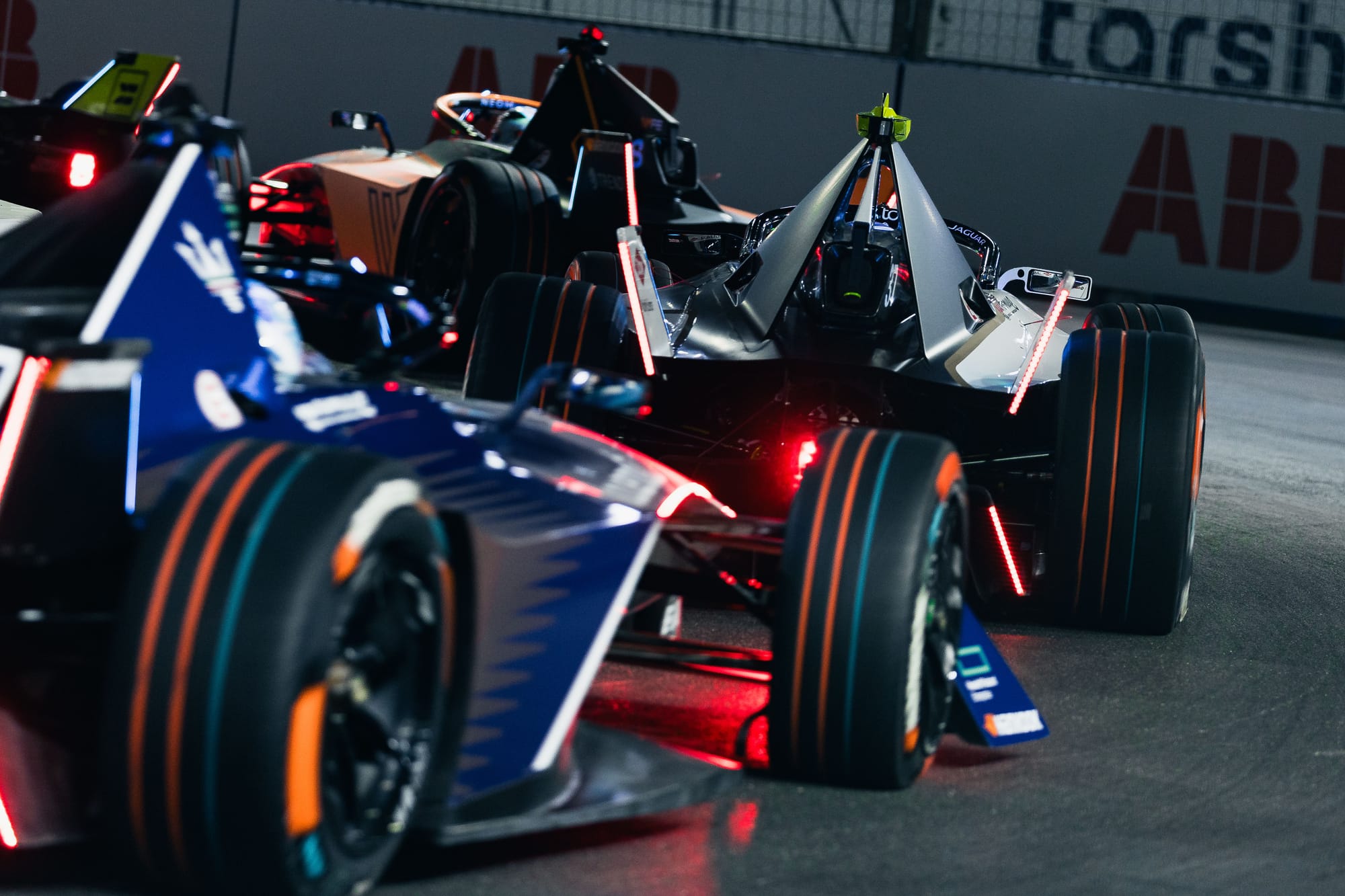
So, the wave of positivity from Formula E feels reasonably strong right now but of course promoters of sports are doing what they are supposed to do - promoting.
Spin and creativity are all part of it but it has to be said that with fresh investment from the Public Investment Fund of Saudi Arabia, new partners including Hackett and Taittinger, and another deal with a globally recognised name still to come, Formula E now actually feels like it is gaining proper traction after the anni horribiles years from 2020-23.
Those believing that terrestrial coverage is vital are of course right in a way, especially for a relatively new start-up sports business like Formula E. But on another level the free-to-air screenings of Formula E in the past, particularly in the UK at least, have earned at best underwhelming figures, and at worst decidedly flat ones.
Poor scheduling, lame promotion and half-hearted commitment from those broadcasters is not especially missed. But on the flipside, many deep-rooted fans of Formula E expect after a decade to be able to watch the races live terrestrially.
The summary at present then for Formula E is that it’s an encouraging start but the slight alchemy feel of the TV figures generated also leaves queries on how the fanbase is really growing and developing.
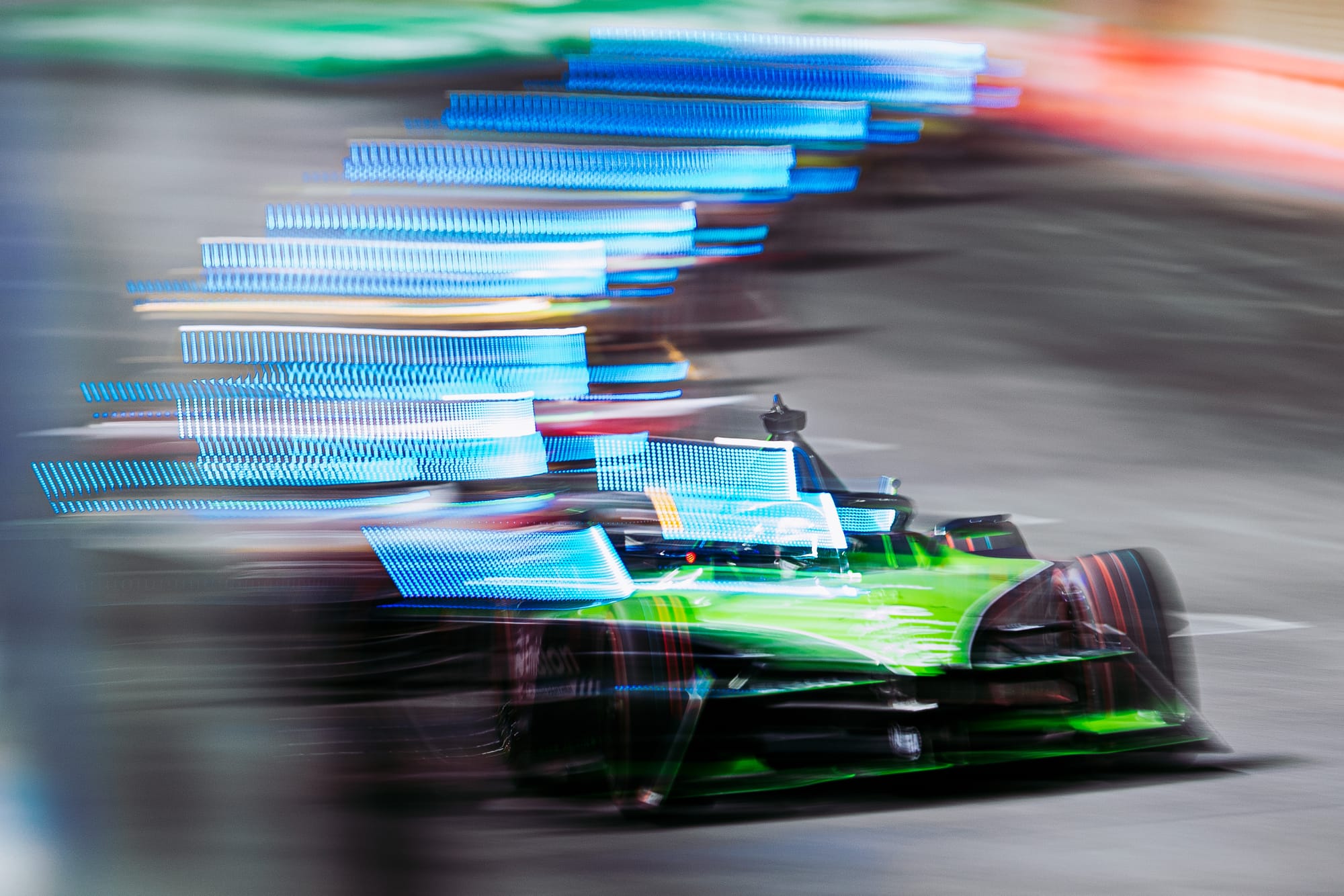
For instance, the growth percentage for the UK needs to be rationalised by the fact that Channel 4 in 2023 did not show the race live and had a highlights programme slotted into a void-like Sunday morning position.
Whatever equations were used to draw up the measurements of eyeballs, the Mexico race didn’t exactly deliver a stellar experience viewing-wise. How many of those football fans really thought, ‘Oh, it’s like other motorsport, nothing much happens after the first corner so I won’t bother next time’?
It would be a shame if some did because Formula E rarely suffers a dud race, so maybe the true success of a reinvigorated leadership in Formula E will only be found out as the season progresses.
But the UK aside, Formula E should be making serious inroads now in its quest to become a sports business that can make the most of its generally accepted excellent sporting product.
It needs to be remembered that fans within it are not typical racing enthusiasts in the sense of a typical NASCAR or F1 fan. Around 60% are motorsport fans generally and according to Dodds from his appearance on the ‘Money Lap Podcast’ last August “we tend to skew slightly younger and slightly more female [fans]”.
What Formula E doesn’t appear to have is hardcore racing fans that want an archetypal motorsport experience with noise, dirt, dust and doughnuts (of all denominations). That appears to be a decent position to be in, especially in a sports market that is increasingly generating fans through TV production, of which Formula E’s is pretty sound and technically progressive.

But more than that, Formula E is also doing some genuinely positive initiatives such as a full programme for the FIA Girls on Track activation, which hosts more than 170 young women from education and also from disadvantaged backgrounds.
It will also launch its own sustainability educational programme later this season, on the back of being the number one in the Global Sustainability Benchmark in Sport report (for the second year running).
Formula E has a lot of great assets but its calendar stability and media reach have traditionally been weak points, so it will be fascinating to see if a solid start can be accelerated once the infuriating mini-break is concluded in March.
*Figures according to Sports Media Watch website


